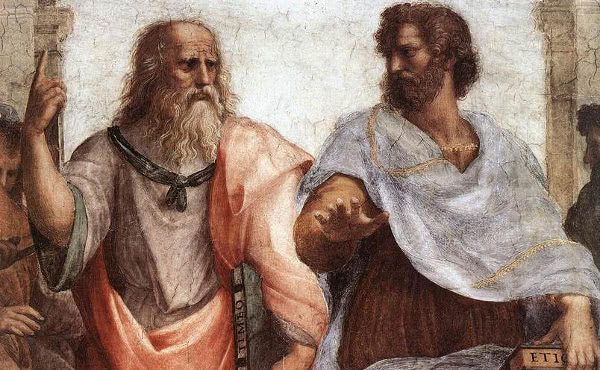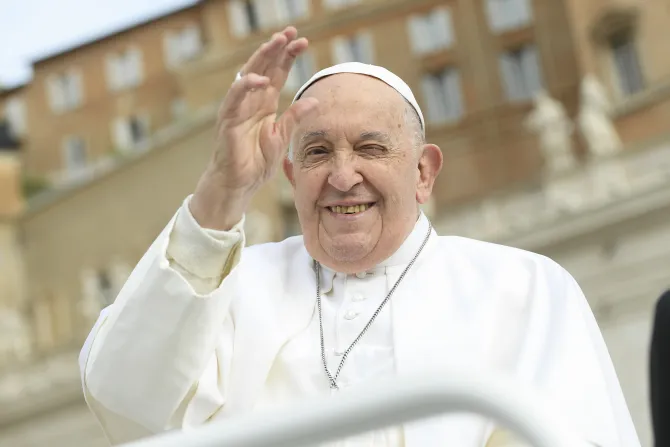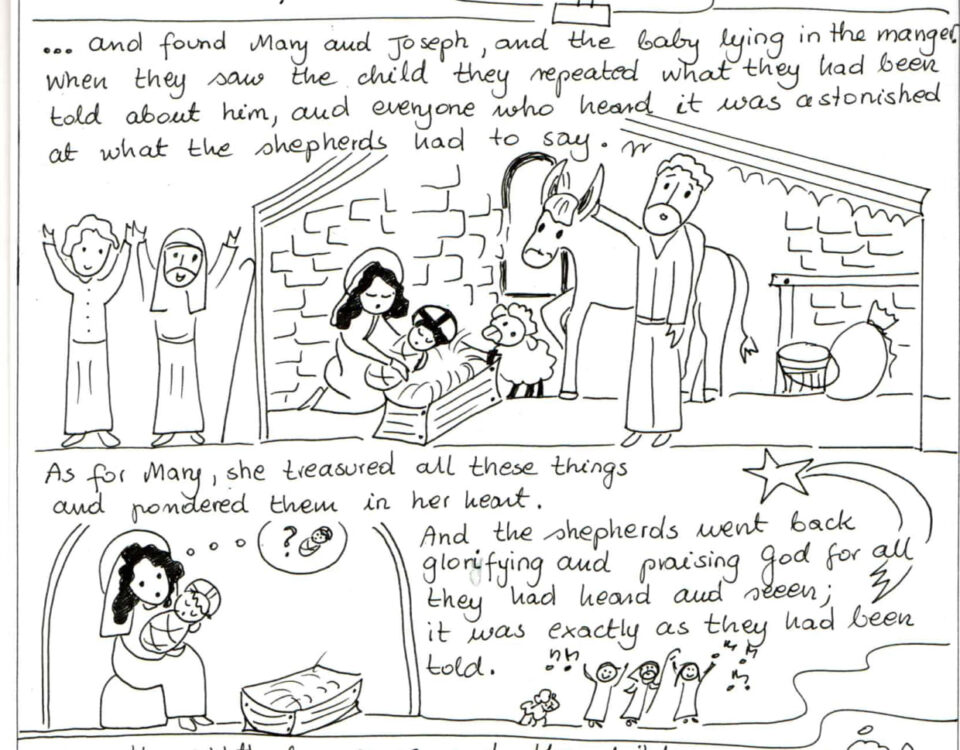Divine Retreat Centre UK – Official Website

The Kingdom of God – The Word
October 24, 2022Do Not Idolize Your Children
October 24, 2022We are all on a journey. Whether we are aware of it or not, we are here on earth because we are on a journey. But the question is: Do you know where you are going? To get to the right destination, we always make sure we take the right path, the right mode of transportation, and the right direction, otherwise, all our efforts are useless. In this journey we call life, we rely on one thing that has always proven to be right, true, and faithful. That is, the word of God.
In the Scriptures, ‘going on a journey’ is a common theme in the lives of every person who heard the word of God. They were called by God and so they heard His voice. This is the story of the father of our faith, Abraham, who went on a journey by faith. “By faith Abraham obeyed when he was called to set out for a place that he was to receive as an inheritance; and he set out, not knowing where he was going” (Hebrews 11:8).
This is the story of Moses, who went on a journey in the pursuit of the invisible God. “By faith he left Egypt, unafraid of the king’s anger; for he persevered as though he saw him who is invisible” (Hebrews 11:27). This is the story of the entire people of Israel, who went on a journey from their slavery in Egypt into freedom in the land promised to them by God. “The Lord said, “I have observed the misery of my people who are in Egypt; I have heard their cry on account of their taskmasters. Indeed, I know their sufferings, and I have come down to deliver them from the Egyptians, and to bring them up out of that land to a good and broad land, a land flowing with milk and honey” (Exodus 3:7-8).
This is the story of King David, who went on a journey to conquer nations, to extend his domain and establish the kingdom of Israel. “And the Lord gave victory to David wherever he went” (1 Chronicles 18:13). This is the story of the Apostles whom Jesus called and sent out to proclaim the Kingdom of God, “Go therefore and make disciples of all nations, baptizing them in the name of the Father and of the Son and of the Holy Spirit” (Matthew 28:19); “Go into all the world and proclaim the good news to the whole creation” (Mark 16:15); “You will receive power when the Holy Spirit has come upon you; and you will be my witnesses in Jerusalem, in all Judea and Samaria, and to the ends of the earth” (Acts 1:8).
Lastly, this is the story of Jesus Christ, who went on a journey from heaven to earth so that through His humanity He could make His people share in His divine life. On His journey, He accepted the rejection, persecution, humiliation, suffering and death. “His face was set toward Jerusalem” (Luke 9:53), where He was crucified for the redemption of sinners. He did all that “for the sake of the joy that was set before him, [he] endured the cross, disregarding its shame, and has taken his seat at the right hand of the throne of God” (Hebrews 12:2).
The message couldn’t be any clearer: We must go on a journey. And we look to none other than Jesus Christ, as the pioneer and perfecter of our faith, to lead us on this journey towards our ultimate destination – the kingdom of God. But, where is this kingdom and how do we get there?
1. The kingdom of God is where God dwells. In the Old Testament, the Lord instructs His chosen servant, Moses, to build a sacred place for Him so that He may remain with His people. “And have them make me a sanctuary, so that I may dwell among them” (Exodus 25:8). It’s a physical place where the Lord was worshiped, glorified, and honored. It was built according to the pattern of the tabernacle that God Himself gave Moses when they met on His holy mountain.
“Then Moses and Aaron, Nadab, and Abihu, and seventy of the elders of Israel went up, and they saw the God of Israel. Under his feet there was something like a pavement of sapphire stone, like the very heaven for clearness. God did not lay his hand on the chief men of the people of Israel; also, they beheld God, and they ate and drank” (Exodus 24:9-11). The sacred place that God had instructed Moses to build is where the Lord desires to share a meal with his people. It’s an altar – a tabernacle with the ark of the covenant, the lamp stand, and the table for the bread of the presence.
2. When God made David king of Israel, David proposed to build a temple for God. But the Lord said to him, “‘It is your son Solomon who shall build my house and my courts, for I have chosen him to be a son to me, and I will be a father to him. I will establish his kingdom forever if he continues resolute in keeping my commandments and my ordinances, as he is today” (1 Chronicles 28:6-7). Solomon built the first Jerusalem Temple and it became the pride and the glory of Israel. The temple lasted until the Babylonian invasion which saw the destruction of the temple.
Under the reign of King Cyrus of Persia, the Israelites were granted permission to rebuild the temple so they could worship, offer sacrifices and resume their religious observances. Again, this temple didn’t remain standing for too long. As prophesied by Jesus, it was destroyed in 70 AD. “As Jesus came out of the temple and was going away, his disciples came to point out to him the buildings of the temple. Then he asked them, “You see all these, do you not? Truly I tell you, not one stone will be left here upon another; all will be thrown down” (Matthew 24:1-2)
3. For the longest time, the Jews didn’t have a place of worship. It was their belief that the new temple would be built by the Messiah. Finally, this was fulfilled in the coming of Jesus Christ. “Jesus answered them, “Destroy this temple, and in three days I will raise it up.” The Jews then said, “This temple has been under construction for forty-six years, and will you raise it up in three days?” But he was speaking of the temple of his body” (John 2:19-21). The body of Jesus Christ, which was “destroyed” by His suffering and crucifixion, was indeed raised up in three days when He rose from the dead. This means Jesus is the Messiah whose body is the new temple of God. “For in him the whole fullness of deity dwells bodily” (Colossians 2:8-10).
“For Christ did not enter a sanctuary made by human hands, a mere copy of the true one, but he entered into heaven itself, now to appear in the presence of God on our behalf” (Hebrews 9:24). In Christ, we have a temple not made by human hands but through the divine work of God. “Now the main point in what we are saying is this: we have such a high priest, one who is seated at the right hand of the throne of the Majesty in the heavens, a minister in the sanctuary and the true tent that the Lord, and not any mortal, has set up” (Hebrews 8:1-2).
4. The Body of Christ has two dimensions: a spiritual dimension and a physical dimension. Spiritually, the body of Christ consists of many members who are united by one Spirit. “For just as the body is one and has many members, and all the members of the body, though many, are one body, so it is with Christ. For in the one Spirit, we were all baptized into one body—Jews or Greeks, slaves or free – and we were all made to drink of one Spirit” (1 Corinthians 12:12-13). Through our baptism, we are joined together into one spiritual body (the Mystical Body of Christ) united by the Spirit of Christ.
Without the Spirit of Christ, we do not belong to his body. “You are not in the flesh; you are in the Spirit, since the Spirit of God dwells in you. Anyone who does not have the spirit of Christ does not belong to him” (Romans 8:9). In a spiritual dimension, the effect of the persecutions against any member of the Body of Christ is felt directly by Jesus Christ Himself. This was proven by the testimony of Paul in his first encounter with Christ. He was still breathing threats and murder against the Christians when “he fell to the ground and heard a voice saying to him, “Saul, Saul, why do you persecute me?” He asked, “Who are you, Lord?” The reply came, “I am Jesus, whom you are persecuting” (Acts 9:4-5).
5. When Jesus called the twelve apostles, He made them stand as the twelve pillars of the new temple. Since they had the word of God and the truth abiding in them, today, they are the “the church of the living God, the pillar and bulwark of the truth” (1 Timothy 3:15). “James and Cephas and John, who were acknowledged pillars” (Galatians 2:9). This temple is “built upon the foundation of the apostles and prophets, with Christ Jesus himself as the cornerstone” (Ephesians 2:20). The temple Jesus established is Apostolic. The tradition and teachings that we receive should come from the tradition and teachings that the apostles received from Christ.
Among the apostles, Jesus chose Peter to be the first among his equals. “And I tell you, you are Peter, and on this rock I will build my church, and the gates of Hades will not prevail against it. I will give you the keys of the kingdom of heaven, and whatever you bind on earth will be bound in heaven, and whatever you loose on earth will be loosed in heaven” (Matthew 16:18-19). The church, which Jesus established with Peter and his successors leading it, is the kingdom of God.
6. The prophet Ezekiel prophesied that with the reign of the King, the Messiah, His people “shall all have one shepherd. They shall follow my ordinances and be careful to observe my statutes” (Ezekiel 37:24). This was fulfilled when Jesus chose his apostles, primarily Peter (and his successors) to serve as a shepherd to oversee his church. Peter and his successors serve as the visible head of the Church. He serves to unite the whole Body of Christ. “Keep watch over yourselves and over all the flock, of which the Holy Spirit has made you overseers, to shepherd the church of God that he obtained with the blood of his own Son” (Acts 20:28). This is how we will understand the physical dimension of the Body of Christ. Wherever Peter (or his successor) is, there is the church that Jesus established. Since there is one shepherd, there is also only one church. “There will be one flock, one shepherd” (John 10:16).
7. When Jesus instituted the Eucharist during the Passover, he was bringing His followers (members) into one body through a covenant – the new blood of the covenant. “Then he took a loaf of bread, and when he had given thanks, he broke it and gave it to them, saying, “This is my body, which is given for you. Do this in remembrance of me.” And he did the same with the cup after supper, saying, “This cup that is poured out for you is the new covenant in my blood” (Luke 22:19-20). At mass, during the time of consecration, the bread and wine is transubstantiated into the Body and Blood of Christ. In the holy body and blood of Jesus, we are all one. In this holy meal, we become united with Christ. Once we are united with Christ, we become a part of God’s temple; we become a part of the kingdom of God. “Those who eat my flesh and drink my blood abide in me, and I in them” (John 6:56).
8. Jesus has one body. Therefore, there is one church, one temple, and one kingdom where God reigns. Jesus prayed for this oneness, unanimity and unity within his body. “I ask not only on behalf of these, but also on behalf of those who will believe in me through their word, that they may all be one. As you, Father, are in me and I am in you, may they also be in us, so that the world may believe that you have sent me” (John 17:20-21).
“There is one body and one Spirit, just as you were called to the one hope of your calling, one Lord, one faith, one baptism, one God and Father of all, who is above all and through all and in all” (Ephesians 4:4-6). The church that Jesus established must have visible unity (unity in the body), spiritual unity (we share on baptism), eschatological unity (we share the same hope of being resurrected in Christ), Christological unity (we share the same understanding of the person of Christ), and doctrinal unity (we share the same doctrine that Jesus taught his apostles). Unity in every respect is necessary to hear the true message of the Gospel. “For indeed the good news came to us just as to them; but the message they heard did not benefit them, because they were not united by faith with those who listened” (Hebrews 4:2).
9. When Jesus compared the kingdom of God with a field that has weeds and wheat (see Matthew 13:24-30), He was referring to His church which consists of holy and sinful people. We might ask, why are there scandals in the Catholic Church? Jesus’ answer is: “while everybody was asleep, an enemy came and sowed weeds among the wheat, and then went away” (Matthew 13:25). “An enemy has done this.” An enemy has planted bad seeds and caused weeds to grow among the wheat. But why does Jesus permit evil to persist? It’s because “in gathering the weeds you would uproot the wheat along with them” (Matthew 13:29). In other words, Jesus is allowing some time for His people to come to repentance, to come to a realization of their sinful and scandalous behavior, and to come to a complete conversion. Then, on the day of judgment, the weeds will be collected and burned (eternal punishment); while the wheat will be taken into His barn (eternal salvation).
10. When we enter into the church, we are one step closer to experiencing the fullness of the kingdom of God. We enter into a full union with the body of Christ when we depart from the world and enter into eternity, where the fullness of Christ fills all in all. The temple here on earth is only a model of the greater temple that is in heaven. “If you conquer, I will make you a pillar in the temple of my God; you will never go out of it. I will write on you the name of my God, and the name of the city of my God, the new Jerusalem that comes down from my God out of heaven, and my own new name” (Revelation 3:12). Once we conquer the trials, tribulations and temptations of this world, we will become a part and a pillar of God’s heavenly temple.
Conclusion
We are all different people, traveling on different paths, yet, we all share one journey and one destination – the journey called life and the heavenly destination. We can make our journey more meaningful, purposeful, and fruitful when we aim to reach God’s kingdom. That is, His heavenly dwelling place. We have a long way to go from where we are today, until we reach the Kingdom of God. But the Lord has given us His Church, His Sacraments, His holy Body and Blood (in the form of bread and wine in the Eucharist) to give us a full assurance of our faith and the foretaste of the eternal life that awaits us.
References:
Where is the kingdom of God
Why should i believe in the Catholic Church
Do you know where the true temple is
The Church is the body of Christ
Which is the true church



